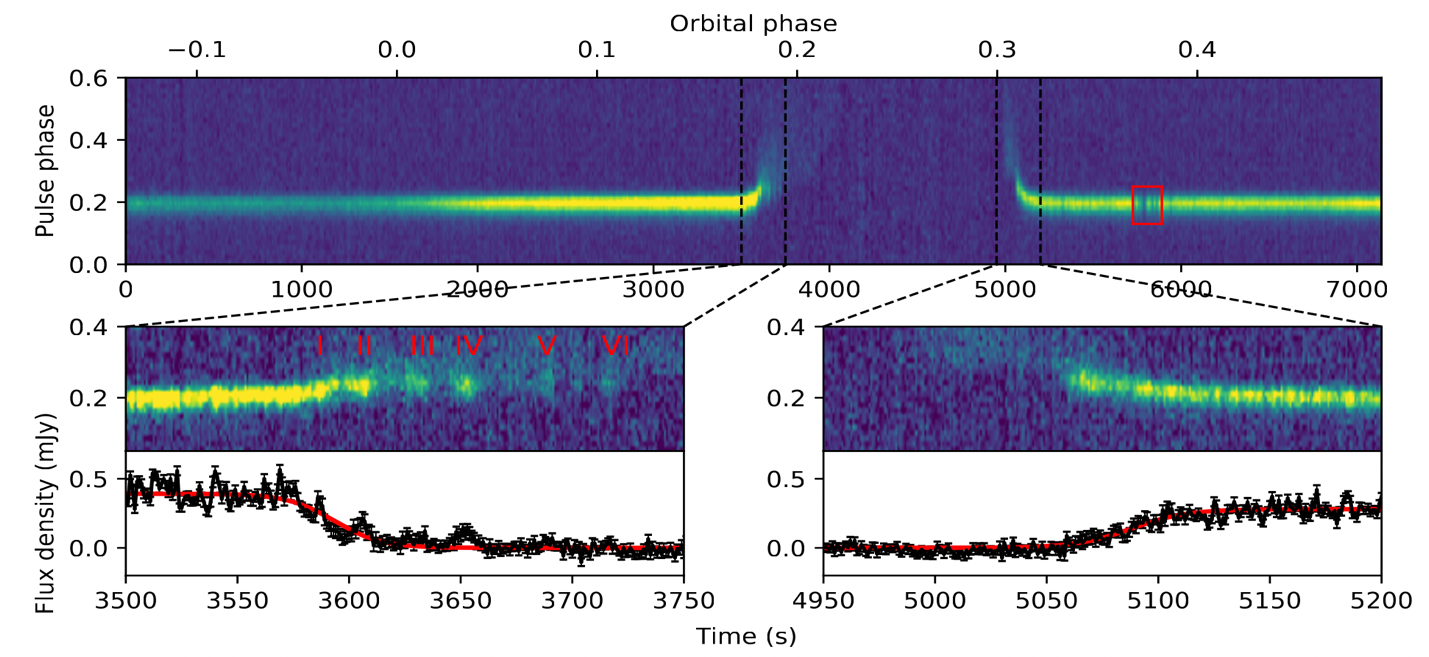A group of scientists headed by Dr Shuangqiang Wang from the Xinjiang Astronomical Observatory (XAO) of the Chinese Academy of Sciences identified the plasma lensing phenomenon in a black widow pulsar PSR J1720-0533. This was achieved with the 500 m Aperture Spherical radio Telescope (FAST).
 The upper panel shows the total intensity of pulse emission vs. pulsar spin and orbital phases with the sub-integration of 1 s of PSR J1720-0533. Enlargements of the ingress and egress of the pulsar are shown in the middle left and middle right panels, respectively. The bottom panels show the pulse flux density variations near the eclipse. Image Credit: Image by Xinjiang Astronomical Observatory.
The upper panel shows the total intensity of pulse emission vs. pulsar spin and orbital phases with the sub-integration of 1 s of PSR J1720-0533. Enlargements of the ingress and egress of the pulsar are shown in the middle left and middle right panels, respectively. The bottom panels show the pulse flux density variations near the eclipse. Image Credit: Image by Xinjiang Astronomical Observatory.
The name Black widow pulsars are from the “black widow” spiders—where, the females consume the males after mating. Black widow pulsar systems contain a low-mass companion star in a compact orbit with a millisecond pulsar. The companions are ablated by emission from the pulsar. Black widow pulsars provide significant opportunities to analyze the characteristics of the companion stars under intense irradiation.
The scientist in the current research observed that the emission of PSR J1720-0533 during the ingress of the eclipse demonstrates quasi-periodic modulations, which might be due to plasma lensing.
The scientists investigated the lensing phenomenon and deduced that the highest magnification for the lens is 1.6, corresponding to a lens size of tens of kilometers. The identification of the plasma lensing phenomenon in PSR J1720-0533 shows the association between lensing and the dispersion measurement.
Furthermore, the scientist also analyzed the polarization profiles near the eclipse of PSR J1720-0533 and identified that the linear polarization of the emission vanished before the dispersion measurement showcased substantial changes. This phenomenon offers robust proof that there is a significant magnetic field in the companion.
The observations of the study indicated that magnetic fields perform a vital role in the eclipsing mechanism of black widow pulsars.
The scientist also evaluated the mass-loss rate of the companion to be 10-12 M⊙/year and hypothesized that the companion would be completely damaged in 1010 year.